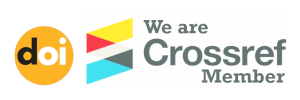Communication Apprehension and Coping Strategies of the English Language Learners: Basis for Interactive Activities Enrichment
Keywords:
communication apprehension, coping strategies, group discussion, meetings, public speakingAbstract
Communication apprehension is an uneasiness experienced by all individuals, especially when speaking. Meanwhile, coping strategies are approaches people use in dealing with anxiety. This study determined the level of communication apprehension and coping strategies of the BSED-English major students of the College of Education (CED), Jose Rizal Memorial State University-Tampilisan Campus. The researchers used the descriptive survey method utilizing the survey-questionnaire checklists. The first instrument was adopted from McCroskey's (1981) cited in Diane (2015) Personal Report of Communication Apprehension 24 (PRCA-24). The other one is the validated researchers-made survey statements comprising 30-item statements categorized as strategies for overcoming communication apprehension in group discussions, meetings, interpersonal conversation, and public speaking, with a Cronbach's alpha value of >0.70. The researchers also adopted McCroskey and Richmond's coding and scoring system, weighted mean, and frequency count. Results show that most of the English major students in JRMSU-TC have a moderate level of communication apprehension. Further, there is a difference in the level of communication apprehension when grouped according to group discussion, meetings, interpersonal communication, and public speaking, as well as in the overall weighted mean. Therefore, there is a difference in the level of communication apprehension of the BSED English major students when grouped according to year level. In terms of coping strategies, students used the following strategies: accepting cultural differences, paying attention when talking to others and considering their cultural views, thoroughly preparing before the speech, and thinking of intrinsic and extrinsic motivation as a reward. In this connection, there are proposed interactive activities that may help overcome the students' communication apprehension.
Downloads
References
Amiri, F., & Puteh, M. (2022). Strategies to Overcome Communication Apprehension during Academic Presentations: A Case of International Students in Malaysian Universities. Journal of Intercultural Communication, 21(2), 34–43. https://doi.org/10.36923/jicc.v21i2.12 DOI: https://doi.org/10.36923/jicc.v21i2.12
Bragg, J. R. (2017). "Communication Apprehension Among Community College Students: A Phenomenology". Electronic Theses and Dissertations. Paper 3236. https://dc.etsu.edu/etd/3236/
Coleman A. E. & Snarey J. (2011). Encyclopedia of Child Behavior and Development. https://doi.org/10.1007/978-0-387-79061-9_3146 DOI: https://doi.org/10.1007/978-0-387-79061-9_3146
Diane, H. R. (2015). "Level of Communication Apprehension and Coping Strategies of Education Students." http://dx.doi.org/10.13140/RG.2.2.30654.92485
Lazarus, R. S. & Folkman, S. (1984). Stress, Appraisal, and Coping. New York: Springer.
McCroskey J.C. (2008). Communication Apprehension: What Have We Learned in the Last Four Decades. https://www.jamescmccroskey.com/publications/228.pdf
Nurdevi, B. (2018). EFL students' strategies in overcoming anxiety in speaking English: A qualitative study of freshmen students of English Department, Muhammadiyah University of Makassar. A Journal of Makassar Muhammadiyah University.
Raja, F. U. (2017). Anxiety level in Students of Public Speaking: Causes and remedies. Journal of Education and Educational Development, 4(1), 94. https://doi.org/10.22555/joeed.v4i1.1001 DOI: https://doi.org/10.22555/joeed.v4i1.1001
Richmond, V. P. & McCroskey, J. C. (1995). Communication: Apprehension, Avoidance, and Effectiveness, 5th ed., Gorsuch- Scarisbrick, Scottsdale.
Yusuf, H. O. (2015). Interactive Activities and its Impact on Students’ Performance in Reading Comprehension in Senior Secondary Schools in Kaduna, Nigeria. Procedia - Social and Behavioral Sciences, 174, 523–528. https://doi.org/10.1016/j.sbspro.2015.01.698 DOI: https://doi.org/10.1016/j.sbspro.2015.01.698
Published on: 19-10-2024
Also Available On
How to Cite
Issue
Section
License
Copyright (c) 2024 Nicole T. Olam, Liza Mae T. Arceo, Elmira C. Rodriguez

This work is licensed under a Creative Commons Attribution 4.0 International License.
Authors contributing to this journal retain the copyright of their articles but agree to publish their articles under the terms of the Creative Commons CC-BY 4.0 License (http://creativecommons.org/licenses/by/4.0/) allowing third parties to copy and redistribute the material in any medium or format, and to remix, transform, and build upon the material, for any purpose, even commercially, under the condition that appropriate credit is given, that a link to the license is provided, and that they indicate if changes were made. They may do so in any reasonable manner, but not in any way that suggests the licensor endorses them or their use.


